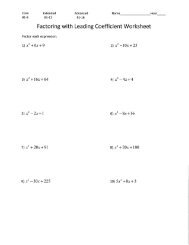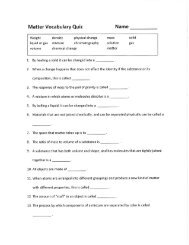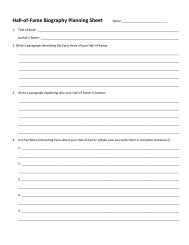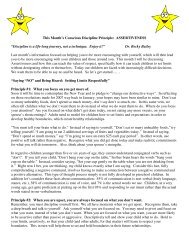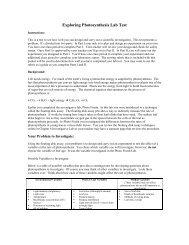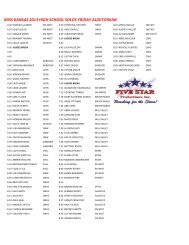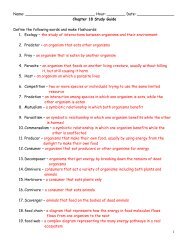Fifth-Sixth grade Flip Charts
Fifth-Sixth grade Flip Charts
Fifth-Sixth grade Flip Charts
Create successful ePaper yourself
Turn your PDF publications into a flip-book with our unique Google optimized e-Paper software.
“There are one-story intellects, two-story intellects, and three-story intellects with skylights. Allfact collectors who have no aim beyond their facts are one-story men. Two-story men compare,reason, generalize, using the labor of fact collectors as their own. Three-story men idealize,imagine, predict--their best illumination comes from above the skylight.”-Oliver Wendell HolmesThe Kansas Social Studies Assessed Indicators and the Three-Story IntellectThe Social Studies <strong>Flip</strong> <strong>Charts</strong> have been created for the indicators that have been targeted forthe Kansas Assessment in Social Studies. The <strong>Flip</strong> <strong>Charts</strong> are available for all three assessedareas: <strong>grade</strong>s 6, 8 and high school. Assessed Indicators are identified with a cognitive categoryof Application (A) or Knowledge (K). Knowledge is defined as the ability to recognize andrecall social studies definitions, facts, concepts and procedures. Application is defined as theability to use or apply social studies knowledge to interpret, analyze, problem solve, makeinformed decisions, and impact civic participation. To further delineate the range of cognitivedemands of Application and Knowledge, The Kansas State Department of Education (KSDE)and the Social Studies <strong>Flip</strong> Chart Committee encourages teachers to use the Three Story Intellectas a model for cognitive understanding:The First-Story (Knowledge): Imagine the collection of Knowledge –those basic definitions,facts, concepts, procedures, being accumulated in the minds of young students—just as we storefurniture within the basement of our homes. We simply collect and gather these pieces until weget ready to use them in a more sophisticated manner. One might see this first-story as the“Gathering Place.” Cognitive tasks on the first-story might include: describing, matching,reciting, identifying.The Second-Story(Knowledge/Application): This story is the “Processing Place.” Eventually, wemove the furniture we accumulated in the basement up to the second-floor in a pattern that ismeaningful--we decide the painting looks best over the mantel, or the rug works well under thedining room table. This happens, just as students start processing and moving Knowledge (thosefacts, definitions, etc) into meaning patterns. The Second-Story can be perceived as a cognitiveprocess that falls between Knowledge and Application. Cognitive tasks here include: explaining,comparing, classifying, sorting, etc.The Third-Story--Attic (Application): If we were to ask, “where do children like to spend most oftheir time in a house?” The most exciting location proposed would be the attic. The attic iswhere we can look at grandmother’s wedding dress or grandfather’s war medals! Cognitively,the Attic is where students can infer, analyze, judge, predict, estimate, etc. As educators, thechallenge proposed is: How much time are we spending in the Attic in our classrooms? Whathappens when the indicator is asking the question at attic level on the assessment and we havebeen teaching in the basement all year? What do we mean by aligning instruction andstandards to the assessment?Comparison of 3-Story Intellect to KSDE Social Studies Standards generated by Lynn Stanley, Social Studies Consultant, KSDE,September 2006. Resources used for Three Story Intellect:http://www.adrian.edu/~fdetwiler/local/ctwg/threestory.htm & http://www.iwebquest.com/webquestcourse/intellect.htmUTH






